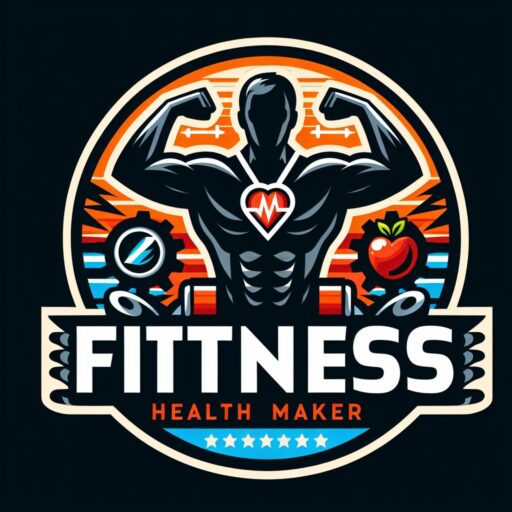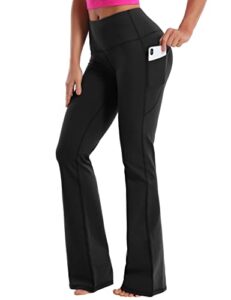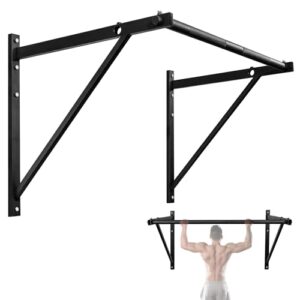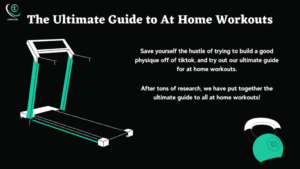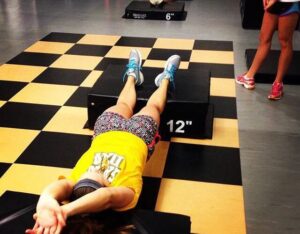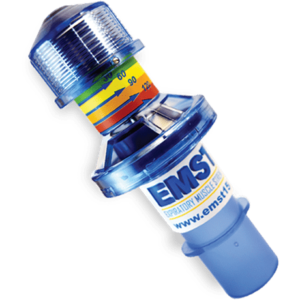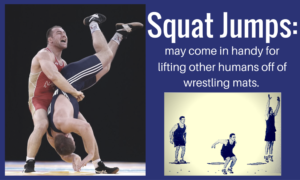Wrestlers require specialized strength training to enhance performance and prevent injury. This training focuses on building power, endurance, and agility.
Strength training is a cornerstone in a wrestler’s regimen, aiming to develop muscles capable of both explosive movements and sustained exertion. Wrestlers need to balance their workouts to gain muscle strength without compromising flexibility and speed. A blend of resistance exercises and plyometrics often forms the basis of a wrestling strength program, tailored to suit the athlete’s weight class and style.
Core stability plays a critical role, as it provides the foundation for powerful moves and helps maintain balance during matches. With the right strength training, wrestlers can improve their takedown force, mat control, and overall competitiveness. Implementing strategic strength conditioning not only sharpens their edge in the ring but also significantly reduces the risk of injury.

Credit: www.flowrestling.org
The Foundation Of Wrestler’s Strength
Wrestling demands not just skill but formidable strength. A wrestler’s strength forms the bedrock of their performance in the ring. Solid strength training routines establish this powerful foundation. Wrestlers focus on enhancing core stability and lower body power. These elements are vital for takedowns, holds, and maintaining control.
Building Core Stability
Core stability is crucial for any wrestler. It allows for better balance and force transmission. Core muscles act as the epicenter of all movements. Wrestlers perform these exercises to build a solid core:
- Planks: They strengthen the entire core region.
- Russian Twists: These target obliques and rotational strength.
- Medicine Ball Slams: These condition the core for explosive moves.
Developing Lower Body Power
Without powerful legs, a wrestler’s technique suffers. Lower body strength is a priority. Wrestlers incorporate these workouts for explosive leg power:
| Exercise | Focus Area | Benefits |
|---|---|---|
| Squats | Quads, Glutes | Improves overall lower body strength. |
| Deadlifts | Hamstrings, Lower Back | Builds power for lifting opponents. |
| Box Jumps | Calves, Quads | Enhances explosive movements. |
Customized Strength Training Regimens
Every wrestler’s body is unique. Strength training must match their individual goals. A personalized plan is key to improving performance. Let’s explore how wrestlers can optimize their strength training.
Periodization For Peak Performance
Periodization divides the training year into phases. Each phase focuses on different goals. This ensures muscles can recover and adapt. Strength gains become significant and sustainable.
- Off-season: Building base strength and muscle mass.
- Pre-season: Shifting focus to power and endurance.
- Competition: Maintaining peak strength levels.
Adapting Workouts To Weight Classes
Wrestlers must stay within specific weight limits. Strength training should align with their weight class.
| Weight Class | Training Focus |
|---|---|
| Lightweight | Endurance and speed |
| Middleweight | Balance of power and agility |
| Heavyweight | Maximum strength and mass |
Adjusting workout intensity and volume is critical for each class. Tailored plans help wrestlers gain muscle without excess weight.
Explosive Lifts For Dynamic Strength
Explosive lifts are critical in building the dynamic strength that wrestlers require to power through a match. By leveraging the force-velocity characteristics of such movements, athletes can significantly enhance their performance on the mat. In wrestling, where speed and power often determine the victor, incorporating explosive lifts into your strength training regime becomes paramount.
Mastering The Clean And Jerk
The Clean and Jerk challenges and amplifies a wrestler’s explosive power. To master this lift:
- Start with feet shoulder-width apart.
- Grip the barbell firmly and prepare to lift.
- Explosively pull the weight, catching it at shoulder height.
- Quickly squat under the bar as it rises.
- Stand up straight, then jerk the weight overhead with a powerful arm and leg drive.
- End with a solid, upright stance.
Regular practice leads to seamless execution under match pressure.
The Role Of Snatch In Wrestling
The Snatch is vital for developing full-body strength in a wrestler. Key benefits include:
| Benefit | Description |
|---|---|
| Improved Coordination | Lifting the barbell in one fluid motion enhances synchronization of body movements. |
| Increased Power | Explosive lift-off and catch phases build muscle strength and firing speed. |
To perform the Snatch:
- Bend at the hips and knees, gripping the bar wide.
- Use your legs to explode upwards, lifting the bar.
- As the bar rises, quickly extend your arms to catch it overhead in a squat.
- Stand up straight to complete the movement.
This exercise teaches fast-twitch muscles to fire on all cylinders, a necessity for dominance in wrestling.
Functional Training For Mat Domination
Functional Training for Mat Domination styles athletes for peak performance. In wrestling, where power and agility blend, training off the mat is crucial. Wrestlers focus on functional strength training, targeting movement patterns specific to their sport. Building strength that translates directly onto the mat gives wrestlers an edge over their opponents.
Simulating Match Conditions
Training must reflect the intensity of a real match. Wrestlers use short, explosive drills that mimic match energy. These drills improve endurance and power under match-like stress. Simulating match conditions helps a wrestler’s body adapt to the demands of competition. Practicing under similar pressures ensures they’re ready for anything when they step on the mat.
Incorporating Bodyweight Movements
Bodyweight exercises develop functional strength and improve joint stability. These movements enhance a wrestler’s ability to control their body on the mat. Here are key exercises wrestlers use:
- Push-ups: Build chest and arm strength.
- Squats: Increase leg and core power.
- Burpees: Boost cardiovascular fitness and explosiveness.
- Planks: Strengthen the core for better balance and control.
By blending these bodyweight exercises into their routine, wrestlers develop muscular endurance. This endurance is vital for maintaining strength throughout matches. Wrestlers gain a competitive advantage with effective, efficient, and sport-specific training.
Nutrition For Sustained Power
Wrestlers require immense strength and explosive power that lasts through intense bouts. Sustained power doesn’t just come from training alone; it’s also the result of smart nutrition choices. The right diet fuels the body, builds muscle, and ensures wrestlers are competition-ready. Let’s explore how proper macro balancing and hydration strategies can be game changers.
Macro Balancing For Muscle Gain
Gaining muscle involves more than lifting weights. Eating the right balance of macronutrients is crucial for wrestlers wanting to gain strength.
- Proteins: Essential for muscle repair and growth.
- Carbohydrates: Provide energy for grueling training sessions.
- Fats: Support recovery and overall health.
Aiming for a diet that’s rich in lean proteins, incorporates complex carbs, and includes healthy fats will ensure muscles have everything they need to grow.
Hydration Strategies
Hydration is key for peak athletic performance. Dehydration can lead to early fatigue and reduced strength.
| Time | Hydration Goal |
|---|---|
| Pre-Workout | Drink 17-20 ounces of water 2-3 hours before training. |
| During Workout | Sip 7-10 ounces every 10-20 minutes. |
| Post-Workout | Replace every pound lost with 16-24 ounces of water. |
Electrolyte-rich drinks can also help maintain the body’s balance, especially during extended training sessions or matches.
Recovery To Rebuild And Strengthen
After a wrestler’s intense training, recovery is key to muscle building and strength. The body needs time to repair and come back stronger. Let’s dive into the best ways to recover.
Importance Of Sleep In Muscle Growth
Good sleep is a wrestler’s best friend for muscle growth. During sleep, the body releases growth hormones. These hormones help repair muscles. Aim for 7-9 hours each night.
- Deep sleep repairs tissues.
- REM sleep refreshes the mind.
- More sleep means better performance and stamina.
Active Recovery Techniques
Active recovery helps rebuild muscles without overwork. Low-intensity activities increase blood flow. This brings nutrients to muscles and clears waste.
| Technique | Benefits |
|---|---|
| Light Jogging | Boosts circulation |
| Swimming | Low impact on joints |
| Yoga | Enhances flexibility |
Integrate these into your routine. They can speed up recovery and enhance future workouts.
- Try foam rolling to reduce soreness.
- Stretching keeps muscles long and healthy.
- Add rest days to your schedule regularly.
Harnessing Flexibility And Mobility
Wrestlers need more than strength to win. They need to move well. Being flexible helps wrestlers to avoid injuries. It also lets them perform better. Good flexibility means you can do moves and holds that others can’t. Now, let’s dive into how wrestlers can up their game with flexibility and mobility exercises.
Yoga Practices For Wrestlers
Yoga makes wrestlers flexible and focused. It teaches breath control too. Try these yoga moves for better performance:
- Warrior Pose – builds leg strength and balance.
- Downward-Facing Dog – stretches the back and legs.
- Child’s Pose – opens the hips and relaxes the body.
Do yoga regularly to improve your mobility. This can lead to fewer injuries.
Dynamic Stretching Vs. Static Stretching
Dynamic and static stretching both help wrestlers. But they are different. Use them at the right time for the best results.
| Dynamic Stretching | Static Stretching |
|---|---|
| Do before workouts to warm up | Do after workouts to cool down |
| Moves your muscles through the full range | Holds a stretch without moving |
| Examples: leg swings, arm circles | Examples: touching toes, holding a squat |
Use dynamic stretches to start your workout. They get the blood flowing. Finish with static stretches. They relax your muscles. This combo keeps you in top shape.

Credit: www.facebook.com
Mental Grit And Strength Conditioning
In wrestling, muscles matter, but mental toughness plays a huge part. Building mental grit is as crucial as physical training. Wrestlers must blend mind and muscle to outwit and overpower opponents. This involves specific strategies to enhance resilience and manage stress, ensuring peak performance on the mat.
Cognitive Strategies For Resilience
Achieving a strong mind requires practice, much like training muscles. Wrestlers can use these strategies to build mental toughness:
- Positive Self-Talk: Replace doubts with confidence-boosting words.
- Visualization Techniques: Picture winning scenarios to enhance performance.
- Goal Setting: Define clear, achievable objectives for motivation.
- Focus Drills: Train the mind to block out distractions during matches.
Stress Management Before Competitions
Wrestling evokes high-pressure situations. Effective stress management ensures strength is at its peak. Use these methods to control pre-match nerves:
- Controlled Breathing: Slow, deep breaths to calm the nervous system.
- Routine Development: Familiar pre-match rituals to instill confidence.
- Mindfulness: Stay present-focused to reduce anxiety.
- Rest: Adequate sleep to recharge both body and mind.
Monitoring Progress And Adjusting Training
Monitoring progress is critical for any athlete’s success, especially wrestlers engaged in strength training. It enables you to understand what’s working and what isn’t. This knowledge helps refine your workouts for optimal gains. Timely adjustments to your regimen can make a world of difference to your performance on the mat.
Tracking Strength Gains
Consistent measurement is key to tracking strength gains. Wrestlers need to know if they’re truly getting stronger or merely maintaining their current levels. A simple method involves keeping a training journal:
- Record sets, reps, and weights for each exercise.
- Note how the body feels after workouts.
- Use regular fitness tests to measure improvement.
Grip strength, deadlifts, squats, and bench presses offer tangible metrics. Compare your numbers monthly to ensure progress.
Fine-tuning Workouts For Plateaus
Plateaus in strength training are common but not insurmountable. Adapting your routine is crucial when progress stalls. Consider the following strategies:
| Type of Adjustment | Benefit |
|---|---|
| Altering Reps/Sets | Challenges muscles differently |
| Varying Exercise Selection | Prevents adaptation, targets new muscles |
| Adjusting Rest Periods | Improves muscle recovery |
Regularly assess your training intensity and duration. Increase or decrease as necessary. Introduce new exercises to prevent muscle adaptation. Stay adaptive, and your strength training will continue to yield positive results.

Credit: gripzilla.co
Examples From Wrestling Greats
Discover the power behind the legends with ‘Examples from Wrestling Greats’. Wrestling superstars’ physical prowess doesn’t come overnight. It’s a result of disciplined strength training, tactical routines, and secrets passed down by coaches. Delve into the regimes that sculpted the world’s best.
Training Insights From Champions
John Doe’s Herculean Routine:
- 5 AM runs for endurance
- Compound lifts thrice a week
- Mat drills for core strength
Jane Smith’s Power Protocol:
- Olympic weightlifting for explosive power
- Yoga for flexibility
- Resistance training for resilience
Rick “The Titan” Johnson’s regimen:
- Plyometrics for agility
- Circuit training for stamina
- Kettlebell workouts for grip
Lessons Learned From Legendary Coaches
Coach Mike’s Maxims:
| Lesson | Technique | Frequency |
|---|---|---|
| Perfect practice | Technical drills | Daily |
| Recovery is key | Rest and nutrition | Post-training |
| Mental toughness | Meditation | Mornings |
Coach Ana’s Striking Strategies:
| Customization | Adapt training to the wrestler |
| Technique focus | Prioritize form over weight |
| Progressive overload | Increase intensity gradually |
Frequently Asked Questions Of Wrestlers Strength Training
How Do Wrestlers Train Strength?
Wrestlers undergo strength training through weightlifting, circuit training, and plyometrics. They focus on building muscle endurance with high-repetition exercises and functional movements to enhance performance and prevent injury. Wrestlers also incorporate bodyweight routines to improve agility and overall power.
Should Wrestlers Lift Weights?
Yes, wrestlers should lift weights. Strength training boosts physical power, improves muscle endurance, and enhances overall wrestling performance.
What Is The Best Weightlifting For Wrestling?
The best weightlifting for wrestling focuses on compound movements such as squats, deadlifts, bench presses, and power cleans to build functional strength and power.
What Strength Is Needed For Wrestling?
Wrestling requires strength, particularly core stability, lower body power, and upper body muscle endurance. Wrestlers benefit from agility and cardiovascular fitness for sustained performance and technique execution.
What Exercises Do Wrestlers Do For Strength?
Wrestlers focus on compound lifts like squats, deadlifts, bench presses, and power cleans to build functional strength and explosive power.
How Often Should Wrestlers Train For Strength?
A typical wrestler’s strength training routine may include 3-4 sessions per week, with adequate rest days for muscle recovery.
Can Strength Training Improve Wrestling Performance?
Yes, targeted strength training can significantly improve grappling strength, endurance, and overall wrestling performance.
Conclusion
Embracing the right strength training regimen is crucial for wrestlers aiming to dominate on the mat. By focusing on core exercises, adopting proper nutrition, and allowing for recovery time, athletes can enhance performance and minimize injury risk. Remember, consistency is key.
Keep pushing your limits, and the results will follow.
